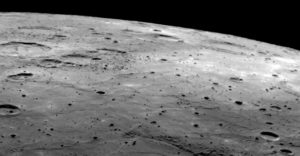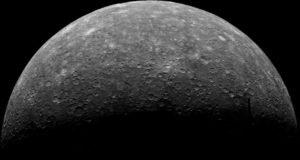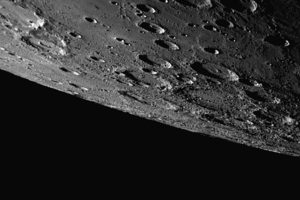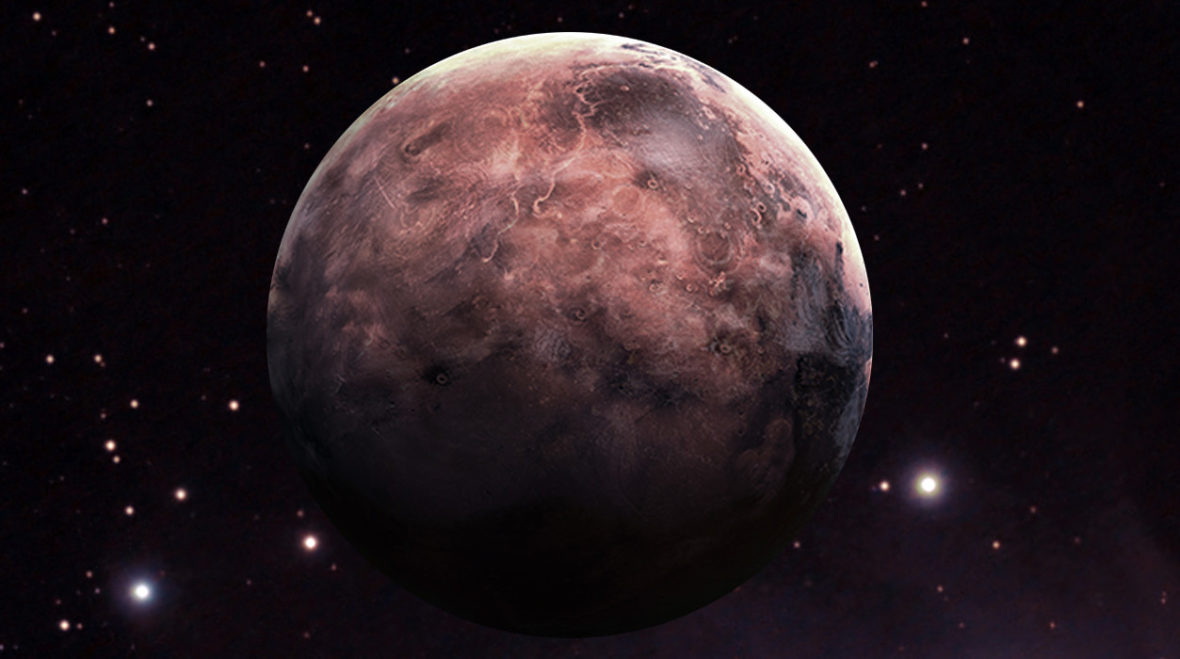Mercury is the smallest and innermost planet in the Solar System. Its orbital period around the Sun is 88 days and it’s the shortest out of all the planets. Mercury is named after the Roman deity Mercury, the messenger of the gods. Take a look below for 32 more interesting and fascinating facts about Mercury.
1. If you weighed 70 pounds on Earth, you would only weigh 27 pounds on Mercury because Mercury is much smaller and has less gravity.
2. Mercury is called the Morning Star because it shines brighter early in the morning when the Sun rises.
3. It has no known weather or water.
4. In the daytime, temperatures can reach up to 400 degrees Celsius while at night they plunge to -170 degrees Celsius.
5. One solar day, which is the time from noon to noon on the planet’s surface, on Mercury lasts the equivalent of 176 Earth days, while the sidereal day, which is the time for 1 rotation in relation to a fixed point, lasts 59 Earth days.
6. Mercury is nearly tidally locked to the Sun and, over time, this has slowed the rotation of the planet to almost match its orbit around the Sun.

7. It’s one of the 5 planets visible with the naked eye even though it’s the smallest planet in the Solar System. In comparison, the Earth is 12,742 kilometers across its equator while Mercury is 4,879 kilometers.
8. Even though it’s a small planet, Mercury is very dense. In fact, each cubic centimeters has a density of 5.4 grams, with only the Earth having a higher density. This is because Mercury is almost entirely composed of heavy metals and rocks.
9. As the iron core of the planet cools and contracts, the surface becomes wrinkled. Scientists have named the wrinkles Lobate Scarps. The Scarps can be up to a mile high and hundreds of miles long.
10. Recently, NASA scientists have found that the solid iron core of Mercury could in fact be molten.
11. Mercury is the second hottest planet, with Venus being the first even though it’s further away from the Sun.
12. Unlike other planets that can self-heal through natural geological processes, the surface of Mercury is covered in craters which are caused by millions of asteroids and comets.
13. Any crater that’s bigger than 250 kilometers in diameter is called as a Basin.
14. The Caloris Basin is the biggest impact crater on Mercury. It’s approximately 1,550 kilometers in diameter and it was discovered in 1974 by the Mariner 10 probe.
15. Only 2 spacecraft have ever visited Mercury. During 1974 and 1975, Marine 10 flew by Mercury three times. On August 3, 2004, the Messenger probe was launched from Cape Canaveral Air Force Station, which was the second probe to visit since the mid 1970s.

16. The exact date of Mercury’s discovery isn’t known but it predates its first historical mention. One of the first mentions is by the Sumerians around 3,000 BC.
17. Heraclitus, a Greek philosopher before the time of Socrates, strongly believed that Mercury and Venus revolved around the Sun and not around the Earth, like it was thought at the time.
18. Unlike Earth, Mercury has no atmosphere which is why it’s not capable of trapping any heat from the Sun.
19. The temperature swings on Mercury are the highest in the Solar System. In a day, the temperature can swing more than 600 degrees Celsius, or 1,100 degrees Fahrenheit.
20. Radar observations in 1991 found that the South and North Pole of Mercury may have ice deep inside the craters because the areas are always covered in shadows and are always cold.
21. Some astronomers believe that ice reached the planet through asteroids that crashed on it. Others believe that gas is trapped inside the planet but escaped and froze near the poles.
22. The Caloris Basin was created about 4 billion years ago by an asteroid impact. The asteroid is believed to have been around 100 kilometers, or 60 miles, wide and it’s believed to have hit Mercury with a force of about 1 trillion bombs of 1 megaton each.
23. The diameter of the metallic core is about 75% of the planet’s diameter. The outer shell of Mercury is only about 500 to 600 kilometers wide.
24. Mariner 10, the first spacecraft to visit Mercury, found that the planet had its own magnetic field.
25. The strength of the magnetic pull of Mercury is just 1% that of Earth.

26. Magnetic fields produced by solar wind often touch Mercury’s magnetic field, which create very powerful magnetic tornadoes. These tornadoes are responsible for sending winds of hot plasma winds to Mercury’s surface.
27. Mercury travels around the Sun at a speed of 180,000 kilometers per hour, or 112,000 miles per hour, which makes it the fastest planet in the Solar System.
28. It’s orbit around the sun is elliptical in shape. The closest it gets to the Sun is 47 million kilometers, or 29 million miles. The closest point is known as the Perihelion.
29. The biggest distance of Mercury from the Sun is 70 million kilometers, or 43 million miles. The farthest point is called the Aphelion.
30. When Mercury reaches its closest point to the Sun, the Sun appears at least 3 times bigger than how it appears on Earth.
31. During sunrise on Mercury, the Sun appears to rise and then set for a while before rising again. During sunset, the Sun appears to set and then rise briefly and then set again.
32. 13 times every 100 years, Mercury can be seen moving across the Sun’s face. This event can be seen directly from Earth.





2 Comments
Pingback:
January 26, 2018 at 1:49 pmPingback:
January 27, 2018 at 8:36 pm